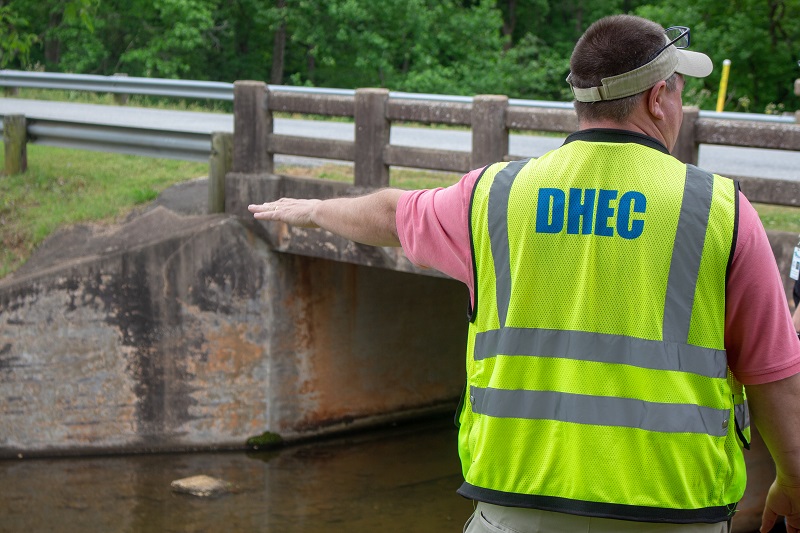During National Dam Safety Awareness Day, DHEC Spotlights the Essential Work of its Dams & Reservoirs Safety Program to Help Protect Lives, Property and the Environment
FOR IMMEDIATE RELEASE:
May 31, 2022
COLUMBIA, S.C. ― In South Carolina, the S.C. Dams and Reservoirs Safety Act is the basis of the safety standards that are in place today to help reduce the risk of dams or reservoirs failing and potentially injuring people or destroying property or the environment. The South Carolina Department of Health of and Environmental Control’s (DHEC) Dams & Reservoirs Safety Program enforces the requirements within the Safety Act for more than 2,300 dams across the state.
Under state law, dam owners are responsible for maintaining the structural integrity of their dams. DHEC performs routine inspections and classification checks on dams, and inspectors share their assessments with dam owners as well as any recommendations or requirements that need addressed to ensure a dam meets all safety standards.

routine inspection in Spartanburg.
“We work very closely with dam owners to make sure they understand the responsibilities that come along with being the owner of a dam,” said Jill Stewart, Director of DHEC's Dam Safety and Stormwater Permitting Division. “The overwhelming majority of regulated dams in our state – about 88 percent – are owned by individual people or homeowners’ associations. Owners of high- and significant-hazard dams are required to have an Emergency Action Plan, which is reviewed by DHEC, that contains a detailed plan of the steps and notifications that will be taken if a particular dam becomes at risk for failing.”
While DHEC works to maintain an up-to-date database of all dams and dam owners in the state, dam ownership is one of the biggest challenges the program faces. Over time, as a property is sold and resold, or parcel lines are redrawn and easements or rights-of-way change, it can be difficult to definitively know who the owner of a particular dam is. When needed, DHEC staff perform diligent reviews of deeds, plats, and other county land records to identify the rightful owner or owners.
When severe weather or other threats occur that could potentially impact a dam’s integrity, DHEC proactively notifies dam owners to begin lowering their water levels or taking other steps that reduce the likelihood of a breach or failure.
“We also make emergency inspections of dams most at risk of having challenges with a hurricane or significant rainfall event to make sure spillways are cleared and to talk with dam owners about any other recommended actions until the weather threat is past,” Stewart said. “When a hurricane looms, our inspectors are boots on the ground working to make sure dams are in the best condition possible for withstanding severe weather.”
In addition to dam inspections, DHEC reviews the plans and specifications that are required to be submitted to the agency before a dam can be built, altered, repaired, or removed to ensure those actions comply with safety laws and regulations. Once that review is complete, work can begin after a written permit is issued by DHEC.
Learn more about DHEC’s Dams & Reservoirs Safety Program at https://des.sc.gov/programs/bureau-water/dams-reservoirs. DHEC also maintains an online web application that shows all regulated dams in the state and their classification type. Additionally, DHEC’s 2020 State of the Dams report provides a detailed overview of dams, dam safety and regulation in South Carolina, as well as statewide improvements that were made since the 2015 floods.
Dam Safety Awareness Day is recognized each year on May 31 in memoriam of the 2,220 people who lost their lives in the 1889 South Fork Dam failure near Johnstown, Pa. Learn more at damsafety.org.
###

